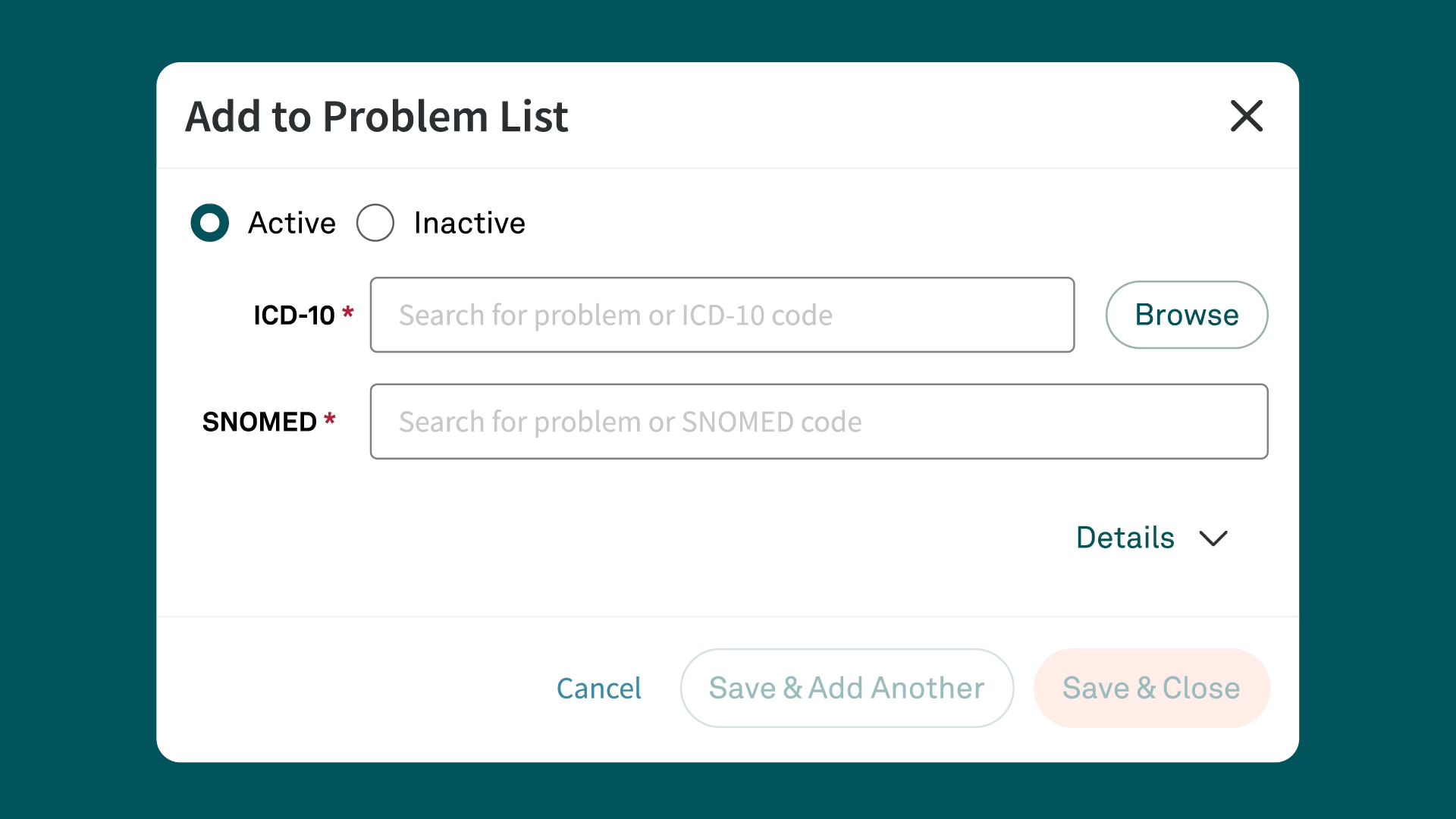ICD-10 Code F41.9
F41.9 is a billable ICD-10 code used to specify a diagnosis of “anxiety disorder, unspecified.”
Anxiety disorder, unspecified
What is the code F41.9?
F41.9 is a billable ICD-10 code used to specify a diagnosis of "anxiety disorder, unspecified." This code is part of "Chapter 5: Mental, Behavioral and Neurodevelopmental Disorders" (codes F01-F99) in the ICD-10 classification system. It is used predominantly in mental health settings, including psychiatry practices, counseling centers, and general healthcare facilities where patients present symptoms of anxiety that are not attributed to a more specific disorder.
Detailed description of F41.9
The F41.9 code is applied when a patient displays symptoms characteristic of anxiety disorders but does not meet the full criteria for any specific anxiety disorders as classified under the ICD-10. This code serves as a placeholder until further assessment can specify a more definitive diagnosis. It is especially useful in situations where a thorough evaluation is impeded by factors such as limited clinical time, lack of resources, or the early stages of treatment.
Symptoms commonly associated with F41.9
Individuals diagnosed under the F41.9 code typically experience a range of symptoms, which can include:
- Excessive, ongoing worry and tension
- An unrealistic view of problems
- Restlessness or a feeling of being "edgy"
- Irritability
- Muscle tension
- Headaches
- Sweating
- Difficulty concentrating
- Nausea
- The need to go to the bathroom frequently
- Tiredness
- Trouble falling or staying asleep
- Trembling
- Being easily startled
Related and similar ICD-10 Codes
There are several related codes within the ICD-10 system that specify different types of anxiety disorders:
- F40.10 (Social phobia, unspecified): Pertains to anxiety triggered by social interactions.
- F41.0 (Panic disorder): Characterized by sudden, unprovoked panic attacks.
- F41.1 (Generalized anxiety disorder): Involves persistent and excessive worry about a variety of things.
Appropriate usage of F41.9 for billing
F41.9 should be used for billing when a patient presents with general symptoms of anxiety that do not clearly align with any specific anxiety disorder. This code is commonly applied in initial patient visits when a more comprehensive diagnostic assessment is pending or when symptoms are reported without a detailed psychiatric evaluation.
Coding guidelines and best practices
Accurate documentation of symptoms and clinical impressions is critical when using the F41.9 code. Healthcare providers should meticulously record the patient's described symptoms, observed behaviors, and any relevant psychological assessments conducted during the visit. If subsequent sessions or further diagnostic evaluations provide more specific insights into the anxiety disorder, it is crucial to update the diagnosis and corresponding ICD-10 code accordingly.
Common pitfalls in coding with F41.9
- Overuse of F41.9: Using this unspecified code when specific symptoms clearly suggest a specific anxiety disorder can lead to suboptimal treatment strategies and may impact insurance processing.
- Lack of follow-up: Not revising the diagnosis as new information becomes available can result in continued inappropriate treatment and difficulties in achieving therapeutic goals.
Instructional notes and/or guidelines with F41.9
Category F41: Other anxiety disorders has an excludes 2 instructional note that is applicable to code F41.9, advising that codes within this category may be used in conjunction with the following ones around anxiety in:
- Acute stress reaction (F43.0)
- Transient adjustment reaction (F43.2)
- Neurasthenia (F48.8)
- Psychophysiologic disorders (F45.-)
- Separation anxiety (F93.0)
If any of the conditions listed in the excludes 2 note have been diagnosed, it is acceptable to use both codes as needed in order to fully describe the patient's condition.
Key resources for F41.9 coding
- CMS ICD-10 homepage: Provides official resources, coding updates, and guidance on ICD-10 implementation.
- WHO ICD-10 online browser: Offers an online tool for verifying ICD-10 codes and understanding their criteria.
Conclusion
The ICD-10 code F41.9 is essential for accurately documenting unspecified anxiety disorders in clinical practice. Proper use of this code facilitates appropriate billing, helps in monitoring patient progress, and ensures compliance with healthcare reporting requirements. Understanding and applying this code correctly is crucial for effective management and treatment of anxiety symptoms in diverse healthcare settings.
Simplify ICD-10 code documentation with Tebra
Tebra’s EHR+ gives you quick searches and Systematized Nomenclature of Medicine (SNOMED) field names for efficient code documentation. Plus, Tebra automatically saves ICD-10 to SNOMED mapping for future searches, streamlining your workflow.

Discover how Tebra helps providers effortlessly document health-related issues and conditions in this detailed post.
Similar Codes
Subscribe to The Intake:
A weekly check-up for your independent practice



